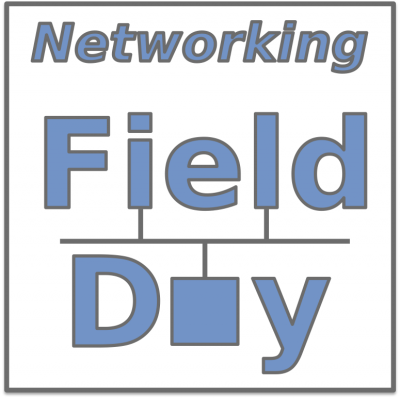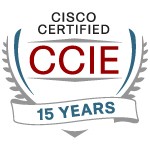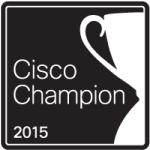 I’m excited to be heading to Silicon Valley in two weeks as a delegate for Network Field Day 9 (#NFD9). Tech thrills! Highly intelligent and skilled delegates! And leaving behind the cold white stuff that keeps falling out of the sky here in Maryland.
I’m excited to be heading to Silicon Valley in two weeks as a delegate for Network Field Day 9 (#NFD9). Tech thrills! Highly intelligent and skilled delegates! And leaving behind the cold white stuff that keeps falling out of the sky here in Maryland.
We all know it’s easy to get into a mental rut, focusing on the day-to-day instead of where we are heading. Tech Field Day events can cure that — a mix of bright people, vendor presentations, probing questions, thought-provoking discussions, and debate — what’s not to like? For me, it’s about seeing where current and new companies are going, what they’re thinking, and learning different ways of looking at the technical world around me.
The delegates will be representing you, the reader. The sessions will be video streamed as well as recorded and posted after the event. And if you email or tweet us questions (@pjwelcher, using hashtag #NFD9), we’ll be glad to try to ask them for you. (Old instructor mantra: “there are no dumb questions”…)
Brandon Carroll’s blog had a good section titled “How Can You Get Involved”: follow the live video stream, twitter, share it! And if you blog and would like to be a delegate, check out the Tech Field Day site, in particular Become a Field Day Delegate.
Several of my fellow delegates to #NFD9 have already managed to write some fine blogs about NFD9 and the vendors that will be presenting. (I envy those with that much time!) So what I’m going to do here: list the vendors and provide some links to their sites, and pass along the #NFD9 articles that I know about.
Let’s take a quick look at the presenting vendors…
Established Vendors
Brocade’s been working in the SDN and OpenFlow spaces. I view the last few years of Brocade as trying to energize the company by expanding from SAN to LAN switching, and finding a good market differentiator. The last NFD, NFD5, that I attended had a great presentation at Brocade, some exciting stuff. And somebody’s got to keep the pressure on Cisco, what with Juniper hitting some speedbumps recently. The virtual Vyatta router and its performance impressed me as an aggressive push into the virtual/cloud router space as well. Looking forward to seeing what Brocade’s going to present!
I been watching Cisco’s rapid datacenter product evolution over the last couple of years, ever since plunging into the space and teaching occasional Nexus classes for a while with FireFly (now http://www.fireflyeducate.com). I was also thrilled to be at the initial ACI announcement and later at follow-on UCS announcements – there’s a lot of innovation going on there. And ACI is now being delivered and refined. A bit later than I’d initially hoped, but there’s huge potential there. It sounds like Cisco has all sorts of ideas about how to leverage the base functionality to do many other things. Exciting stuff! I can’t wait to see what Cisco is going to talk about at #NFD9.
SD-WAN
Greg Ferro and some of my fellow delegates of my fellow delegates have been referring to SD-WAN (Software-Defined WAN) lately. I was thinking of holding out for “PfRaaS” (Performance Routing as a Service), but PfR is a Cisco-ism, and “aaS” doesn’t fit the vendors who have hardware-based solutions. Bzzzt! So SD-WAN wins.
This is on my to-blog list, potentially really useful stuff! I’ve already got a list of ten or so companies that seem to be in the Software Defined WAN space. Telling them apart will be the challenge. Feature scorecard? We’ll see.
I find myself wondering: how does the average or small shop pick one of these vendors? Like network management tools, there’s a significant investment to doing any kind of real testing, to see what works, what doesn’t work, and how useful the technology is in practice. And I suspect there’s nobody that’ll pay a neutral third party to do testing and publish findings. What vendor wants to pay for testing that could turn out well, but might result in egg on their face (even if any criticism is constructive)?
Some of these vendors claim to tell you about traffic flows in your network. How useful is that? How finely grained? I recall a WAN QoS product (which I won’t name here) which also reported on flows. Customers ended up using it for whack-a-mole on WAN bandwidth hogs. Then dis-used because whack-a-mole is a waste of time when there are lots of moles to be whacked.
Are these the new graphical traffic whack-a-mole apps? Why better than, worse than NetFlow? Automated SLA’s and traffic shifts seem to be part of the new capabilities they bring to the table. Shifting VoIP and sensitive traffic to a less lossy link, yes, that might be useful. That’s where the comparison to PfR comes in. Integrated with ease of use? Could be a chance to win big, compared to having to use third party products etc.
Network Management
NetBeez apparently does Distributed Network Monitoring via Rasberry Pi based Linux Toasters. Tests include Ping, HTTP, Traceroute, DNS, and ad hoc iPerf tests with custom parameters. Key question for me for #NFD9 is how NetBeez differs from AppNeta Pathview, what NetBeez thinks they do better. I’ve been using Pathview for a while and like it. My wishlist for them is faster/more polling, e.g. web page pulls, with some form of timestamp correlation. I’ve tried running one inside and one outside a problem Riverbed/Sonicwall combination, polling external websites every 3 minutes, looking for a quantitative difference to correlate with UX (User Experience) issues. Not enough fine granularity. So I’m eager to get NetBeez’s vision, what they think they can do differently, and how they report it.
Note to self: there’s definitely another blog lurking in this whole topic. Related story: if you have multiple ISPs being load balanced for outbound user traffic, and then have some some UX problems, how do you figure out which one, so you can shut down the link to the ISP causing the problems?
Concerning SolarWinds… Love their breadth of coverage. Love that they have many customers who swear by SolarWinds Orion (“SWO”). SWO is darn good value compared to much more expensive tools that don’t do that much more. However, to get it out of the way: I don’t like their approach to per-interface licensing, it drives the cost up, which means most sites don’t monitor all active interfaces and don’t do Autodiscovery. I could also wish for more depth, more power features. And, as with most net management products, far less fiddle time (discover, solve SNMP management issue, manage/unmanage interfaces because of licensing limits, etc.). How about some smart canned SNMP trap handling, for example?
Reverting to the positive side: I do appreciate the chance to see what new things SolarWinds can help me and my customers manage, and what cool new functionality has been added.
New Twists on Switching / Control
I needed a way to lump these together, hence “new twists”.
My understanding is that Cumulus is about a common Linux OS for bare metal networking and the base for an ecosystem of add-on products. I’d like to know more. From experience with open source net management products that were hard to build on anything but their native Linux variant, I can see virtue in providing a common Linux platform for developers to add functionality to.
I do find myself wondering: how does this differ from Arista EOS+ (assuming Arista EOS were portable, as rumors had it a few months back)? What are the plusses and minuses of Cumulus versus Arista? Things they want to imitate or avoid? What makes Cumulus Linux better than others?
NEC has me trained to expect to hear about OpenStack from them. We’ll have to wait and see what’s new and hot there. I’m collecting good use cases where OpenStack really adds value. I’ve seen a couple, but they struck me as minor. What’s the OpenStack “killer app”? What new cool things are being added to OpenStack? What does NEC have in the works?
Prior exposure to Pluribus leads me to expect great presentations. The products are a unique spin, with a mix of server-switches or “pure” Top of Rack switches that can be configured by the programmable Netvisor OS, described as a distributed network OS that supports bare-metal hypervisor virtualization.
I’m trying to open my mind here. I tend to favor complete solutions, and be risk averse (meaning new vendor averse, most likely). It’s not like the wise don’t also let new features in Cisco or other vendor code mature before deploying them. Yes, TAC support, and vendor company expected lifetime are also factors to consider, and weigh against functionality.
Blogs About or Related to NFD9
Some of the following have good questions, ones for the delegates to ask the vendors at NFD9. Please tweet or email in your questions, and I’ll be glad to add them to my list.
Nick Buraglio: Networking Field Day 9
Lindsay Hill:
Jordan Martin: NFD9 Homework: CloudGenix
Brandon Carroll: #NFD9, Here I Come!
Related Links
- Greg Ferro (EtherealMind): SD-WAN
- Tom Hollingsworth: Riding the SD-WAN Wave
Comments
Comments are welcomed, both in agreement or informative disagreement with the above, and especially good questions to ask the NFD9 vendors! Thanks in advance!
Hashtags: #NFD9 #Brocade #Cisco #CiscoChampions #SD-WAN #NetworkManagement #OpenStack
Twitter: @pjwelcher


